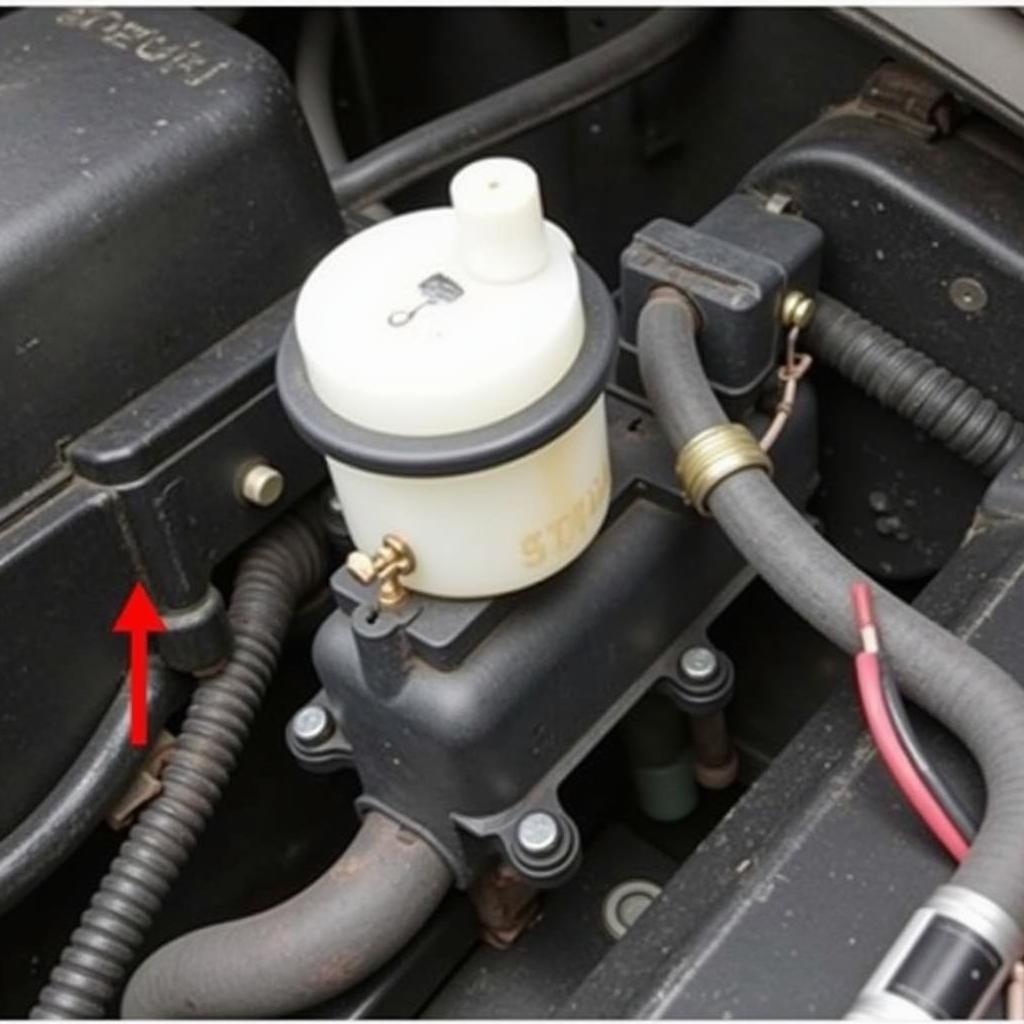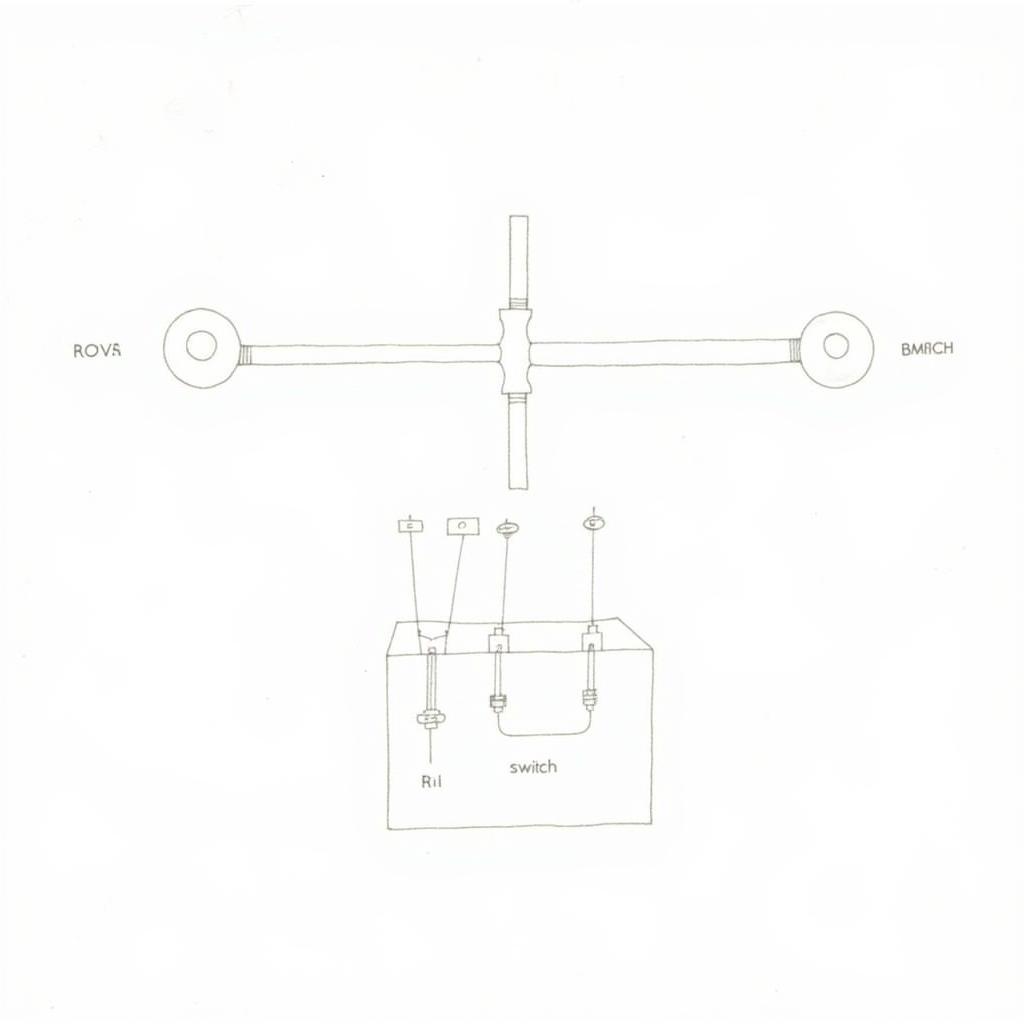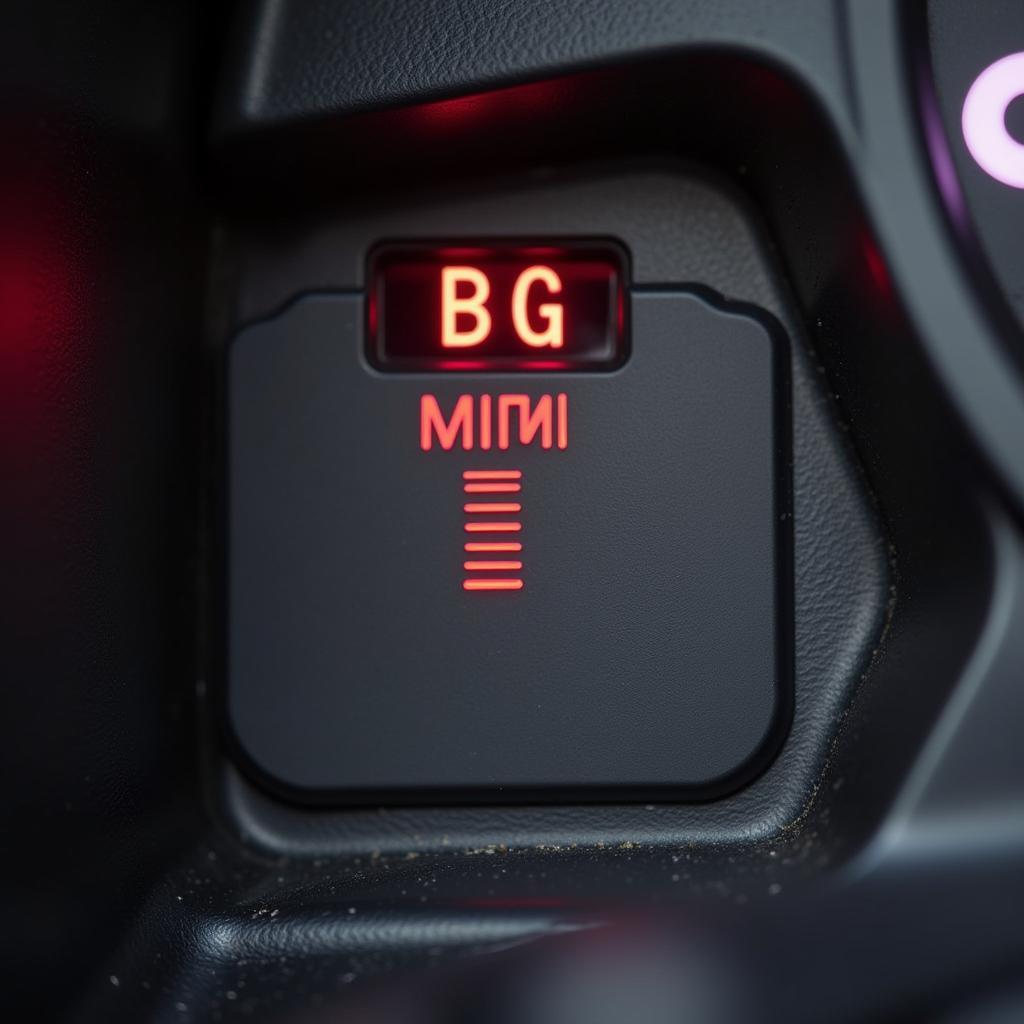If your 1989 Jaguar doesn’t illuminate the brake pressure warning light, it’s a serious safety concern that demands immediate attention. This issue signifies a potential problem within your braking system, and ignoring it could lead to brake failure. This article will guide you through the potential causes and solutions for a 1989 Jaguar with no brake pressure warning lights, providing you with the knowledge to address this critical issue.
Understanding the Brake Pressure Warning Light System in a 1989 Jaguar
The brake pressure warning light in your 1989 Jaguar is designed to alert you to two primary issues: low brake fluid and a hydraulic system failure. When the brake fluid level drops below a safe threshold, the float in the master cylinder reservoir activates the warning light. Similarly, if a portion of the hydraulic system fails, resulting in unequal pressure, the warning light should illuminate. Understanding this system is crucial to diagnosing why your warning light isn’t functioning as it should.
Common Causes of a Non-Functioning Brake Light
Several factors can contribute to a non-functioning brake pressure warning light in a 1989 Jaguar. One common culprit is a faulty bulb. It’s always the easiest place to start and can often be a quick fix. Beyond the bulb, the issue could lie within the wiring, the sensor in the master cylinder, or even a malfunctioning pressure differential switch. Additionally, issues with the vehicle’s electrical system, such as a blown fuse or a faulty relay, can also prevent the warning light from illuminating.
 1989 Jaguar Brake Master Cylinder and Reservoir
1989 Jaguar Brake Master Cylinder and Reservoir
Diagnosing the Problem: A Step-by-Step Guide
-
Check the Bulb: Begin by inspecting the brake warning light bulb in the instrument cluster. Replace it if necessary. This simple step can often resolve the issue.
-
Inspect the Wiring: Carefully examine the wiring connected to the brake fluid level sensor and the pressure differential switch for any signs of damage, corrosion, or loose connections. Repair or replace any damaged wiring as needed.
-
Test the Brake Fluid Level Sensor: Use a multimeter to check the continuity of the sensor. If the sensor is faulty, replace it.
-
Examine the Pressure Differential Switch: This switch detects imbalances in the hydraulic system. Test it using a multimeter or a pressure gauge to ensure it’s functioning correctly. Replace it if it’s faulty.
-
Check the Fuses and Relays: Locate the fuse and relay related to the brake warning light circuit in your Jaguar’s fuse box. Check for blown fuses and replace them if necessary. Also, test the relay to ensure it’s functioning correctly.
 Jaguar Brake System Wiring Diagram
Jaguar Brake System Wiring Diagram
Addressing Underlying Brake Issues
While a malfunctioning warning light may seem like a minor electrical problem, it can often indicate a deeper issue within the braking system itself. Low brake fluid, for example, signifies a potential leak, which requires immediate attention. Similarly, a faulty pressure differential switch suggests a problem with the hydraulic system, possibly indicating a leak or a failing component. Never ignore a brake warning light issue, even if you’ve fixed the electrical component. Always ensure the underlying brake system problem is addressed to ensure your safety.
“Ignoring a brake warning light is akin to ignoring a ticking time bomb,” says veteran automotive electrician, Johnathan “Sparky” Maxwell. “It’s not just a light; it’s a critical safety system designed to protect you.”
Remote Diagnostics and Programming
In some instances, remote diagnostics and programming can be employed to troubleshoot complex electrical issues in your 1989 Jaguar. This technology allows skilled technicians to access your vehicle’s systems remotely and identify the root cause of the problem. This can be especially beneficial for diagnosing intermittent faults or issues with the vehicle’s electronic control units.
Conclusion
Addressing a non-functioning brake pressure warning light in your 1989 Jaguar is paramount for your safety. This issue could indicate a serious problem within your braking system, requiring prompt attention. By following the diagnostic steps outlined in this article, you can identify the root cause and take appropriate action. Remember, a functioning brake warning light is crucial for ensuring your safety on the road. Don’t delay in addressing this important issue in your 1989 Jaguar. “Addressing these issues proactively ensures your safety and the longevity of your Jaguar’s braking system,” adds Maxwell.
FAQ
-
What does the brake pressure warning light indicate? It signals low brake fluid or a hydraulic system failure.
-
Is it safe to drive with a malfunctioning brake warning light? No, it’s extremely dangerous and could lead to brake failure.
-
Can I fix the problem myself? Basic checks like the bulb and fuses are DIY-friendly. More complex issues may require professional help.
-
What if the warning light comes on intermittently? This often indicates a loose connection or a failing component and requires immediate inspection.
-
How much does it cost to fix a brake warning light issue? The cost varies depending on the underlying problem, ranging from a few dollars for a new bulb to hundreds for more complex repairs.
-
What are the signs of a brake fluid leak? Look for fluid puddles under the car, a spongy brake pedal, or a low brake fluid level.
-
How often should I check my brake fluid? It’s recommended to check your brake fluid level at least once a month.

